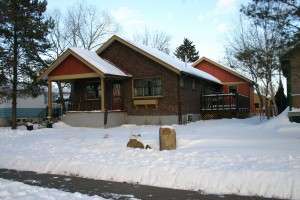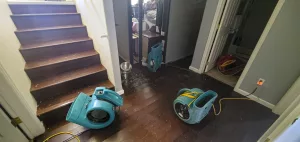Everything requires maintenance: cars, computers, even relationships. Your home is no exception. Even brand-new homes will need frequent work to take care of anything that may cause a larger problem down the road. Here are five tips to help you keep your property in the best shape possible.

General Cleaning
The longer dirt sits on a surface, the better it seems to weld itself there, so clean and clean often
Some things – like riding a bike, for instance – get easier with time. Cleaning isn’t one of those things. The longer dirt sits on a surface, the better it seems to weld itself there, so clean and clean often. This is the most basic and least expensive type of maintenance work you can do on your home. A little elbow grease (whatever that is), water and soap will yield great results, and prevent real damage. After all, while a little dirt won’t hurt anything, dirt and grime that’s left too long can cause larger home maintenance problems.
Carpets, showers and kitchen walls are all parts of a house that need frequent cleaning. If you haven’t been doing regular upkeep here, don’t expect to be able to get these areas polished up when it’s time to sell. Dirt will travel deeper and deeper into carpet fibers, soap scum and hard water deposits will build up on grout and cooking oils will bond to kitchen walls. If you leave things too long, you will eventually be forced to re-carpet, re-tile or re-paint just to clean up the mess.
And don’t forget, clean houses sell far faster and for a better price than dirty ones, so maintenance is key to making sure that your home is in the best shape possible when you sell.
Furnace Filters
Do you need the fanciest furnace filter out there? No. But you do need to change it often – about once every month is best. Contrary to popular belief, a furnace filter is not designed keep your ducts clean or reduce dust in the house. And while a fancy filter may be better at collecting the pollen and dust that causes allergies, a cheaper filter will still fulfill its intended purpose: to protect the furnace fan motor and heating coils. When dust collects on these components, it reduces efficiency, and could even cause damage. When you neglect to change the furnace filter, the dust and dirt that collects in the furnace makes it work harder to circulate air through the house. Leaving a filter in for too long can cause premature wear and tear on your furnace.
If you are doing renovations, be sure to change your furnace filter even more often. Dust from drywall, wood and MDF is very fine and can damage your furnace or reduce its efficiency. Check your filter every couple of days during big-time renovations -and every couple of weeks if you’re doing a smaller project. It only takes a couple of seconds to check. If it’s filled with dust, change it.
Eavestroughs
Eavestroughs or gutters take water away from your house and prevent it from seeping through your foundation
Your roofing system does a lot of work to keep you dry. The roof itself prevents you from living in a soggy mess, but a roof alone is not enough. Eavestroughs or gutters take that water away from your house and prevent it from seeping through your foundation. Without eavestroughs and proper downspouts, your home would likely need major repairs in a short period of time.
This is why it’s essential that you keep your gutters clean and your downspouts free of debris. It’s especially important to check your eavestroughs in the fall to make sure they’re free of leaves. If they aren’t flowing freely when winter arrives, water can back up, freeze and cause damage to your roof.
Whether flat or pitched, aluminum, or asphalt shingle, all roofs need a place to channel the water. Make sure that your downspouts are down when it rains and that they are long enough to keep water from flowing back against the foundation. Inspect eavestroughs for sagging or leaking a few times a year.
Exterior Caulking & Painting
Paint and caulking seal up surfaces to make sure water doesn’t get in and cause damage. So, painting window trim, doors and other wooden parts on your home will add a layer of protection against sun and water. Caulking is used in the same way to seal up seams where materials are joined.
You can maintain this protection by removing and touching up old paint as needed. The same goes for caulking: Scrape out old, cracked caulking and re-caulk the area to ensure it remains water-tight. Inspect paint and caulking every year to ensure it remains intact. This simple maintenance goes a long way toward preventing major exterior repairs.
Yard Work
If you’re not into gardening and landscaping, there’s no need to get fancy, but you should do your best to keep things neat and under control.
A home’s yard, both front and back, can be either a major selling feature or a real turnoff for buyers. If you’re not into gardening and landscaping, there’s no need to get fancy, but you should do your best to keep things neat and under control. Weeding and trimming are important during the summer months, as weeds only spread with time and grass can become almost impossible to cut if left for too long. Trees should be trimmed yearly in the fall and leaves either mulched or raked. You should also seed any dead patches of grass and fertilize as necessary to keep your lawn green.
Whether you live in an apartment, a house or a townhome, you need to make sure maintenance is being performed on your property. Waiting until something falls apart is not the best practice. Proactive home maintenance schedules are a great way to minimize replacement costs and maximize the value of your real estate.
by +Alan F Macdonald REALTOR® | Copyright © – gimme-shelter.com
[40002]

